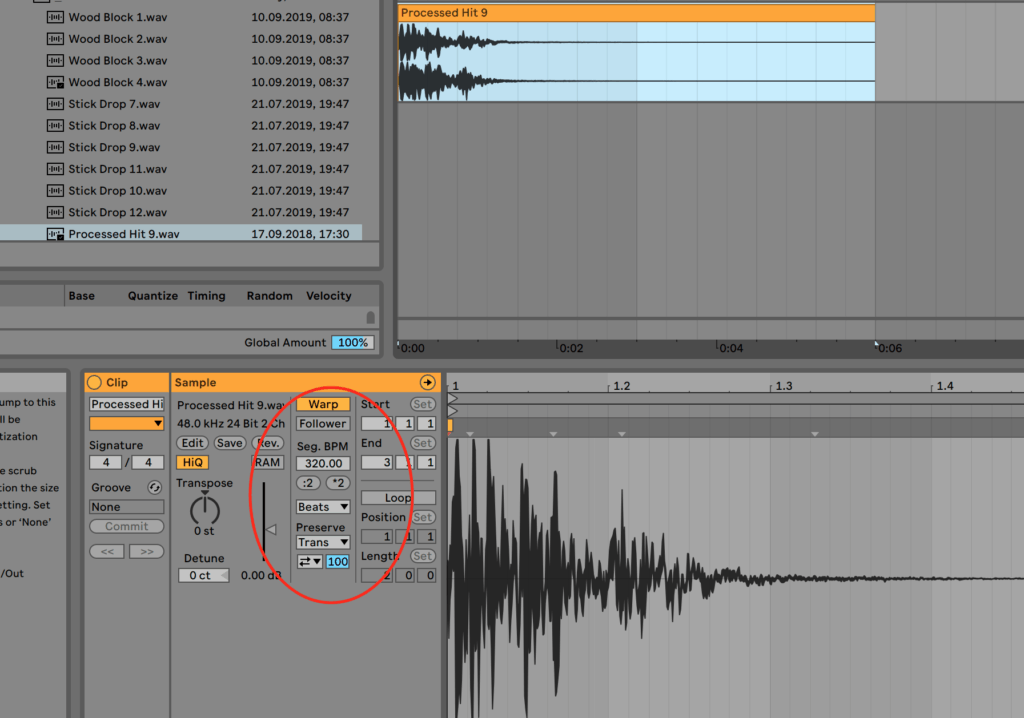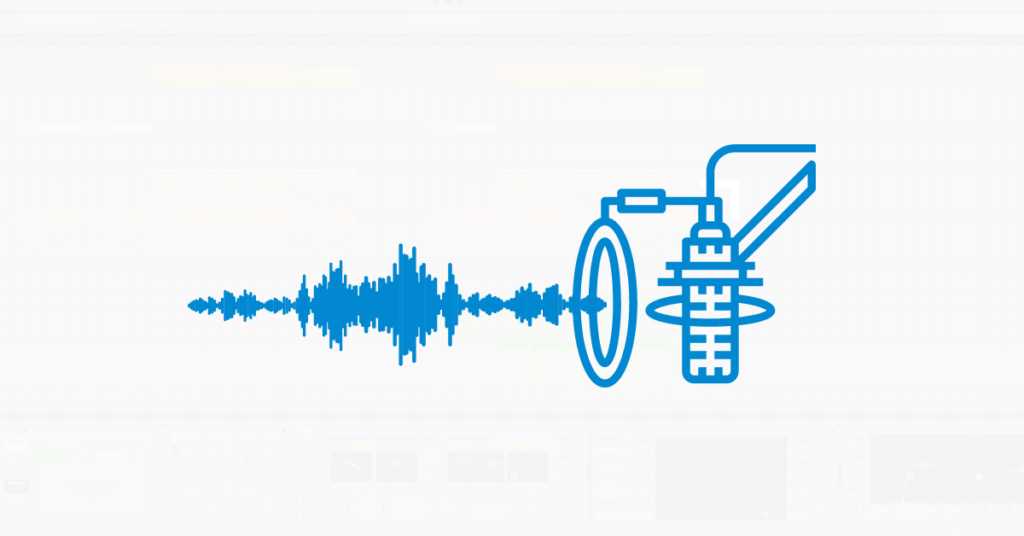Why does my music sound stale and un-organic?
Some of it blame it on the following:
- no outboard gear
- bad songwriting
- bad plugins
- the mix
- the mastering
- note velocity
Most of the time, none of this is the case.
You need layers in your music with natural movement.
Synths can’t do this. You’ll need to look to recorded sounds from the real world.
This is where foley comes in.
Note: You can grab our FREE foley pack below, with 270+ samples for you to use in your music. I’ll also use it to demonstrate techniques in this article.
Foley? What’s That?
Not ‘folly’ or ‘holey’ – foley.
The term comes from the film and theatre industries (named after a guy called Jack Foley – go figure), and it’s a term used to describe recorded sounds that mimic what the actor is doing on screen, layered in for added realism and clarity.
Normally, they are recorded to ‘dub’ over what is happening on screen, because the original recording does not come through well enough or isn’t present at all.
Think of footsteps down the hallway – recording them well at such close proximity while trying to film an actor live is far too difficult a process. It’d be easier and less costly to add them in during post-production within a controlled studio environment.

Credit: Zachary Staines
The types of foley sounds can vary far and wide, and really have no boundaries.
You know what I’m talking about:
- leaves crunching
- water streams
- shattering glass
- keys moving
- tapping on wood
- breathing
- city sounds
But this has expanded to other non-organic sounds, like:
- vinyl crackle
- radio noise
- gear noise
The list goes on.
Foley artists are traditionally only found in film and other related industries. But in the last 15 years, a new use for these sounds has been adopted.
With the rise of genres like lo-fi hip hop, and certain varieties of trap and future bass, foley has become a staple in the modern electronic music producer’s arsenal.
This is thanks to modern DAW’s and their ability to work well with audio clips and make them sound musical, rather than just merely functional.
Among the snappy snares and boomy kicks, you’ll find subtle layers of wind, noise and footsteps, that texturize songs and bring them to life.
A lot of the time, producers just don’t know what foley is and how it can add a certain feel to a track
Most foley sound effects are found in dedicated sample packs – on services like Splice Sounds (sponsored).
But the diggers and determined producers will use just about anything they can find, and sometimes the more obscure, the better, sampling strange YouTube clips or finding old tape sounds.
The hardcore people will even buy something like a Zoom H1 field recorder and go and record a bunch of interesting natural sounds, like we did for our sample pack.
Examples of Music Using Foley
Not convinced? Don’t know what you’re hearing in those organic-sounding tracks you aspire to make. Now you know what to listen out for, can you tell me why the following tracks have that organic feel?
Karma Kid – No Qualms
This track is truly incredible, and an all-time personal favourite.
Foley is used very deliberately in this track, as you can hear in the fills between bars with sloppy percussion and bursts of different types of noise. Creative as f*ck.
Arbour – Oh Ah
Foley in this track is used a lot more consistently, and also rhythmically.
You’ll find noise with tasteful distortion applied underneath the drums, adding certain character.
But on top of that, there is a chopped noise sample being played percussively, giving it an organic yet rhythmic motion.
KAASI – Maybe Monday
This house track is laden with bits of foley, from birds chirping, to water dripping in the stereo field, to knocking sounds forming percussion.
This is very obvious in the intro where sounds seem to come and go very fast, creating movement.
Techniques for Using Foley Sounds
Cool, so foley can add something to my music, but how?
There are many different techniques and creative processes you can use to work it into your music, and of course, it depends on the sound and genre you are making.
So here are a few simple tips that you can start using to get acquainted with using foley effects.
1. The Sample Matters
The quality of foley packs is very sporadic, and it can take a while before you not only find a good sample, but one that works in your track.
Don’t listen to samples in isolation – drag them into your sessions and get a feel for how they change your track. Music is the sum of it’s parts.
Let me demonstrate what I mean:
2. Embrace The Randomness
A lot of foley will not have a BPM tag, nor will it sound ‘in-time’. Part of the charm of foley sound effects is that they transcend the grid, adding little bits of implied rhythm to your music.
This works best when lowered in volume in the mix, as your drums and percussion will sit ‘on-top’ of your foley, providing the defined rhythm wile foley fills in the gaps.
Here’s an example of how that works in action:
3. Listen for What is Missing
As producers, we have the ultimate creative control of what goes into our track.
Often, foley can fill a void in our music, especially when it’s the right type of sound for the track.
Like I said in Tip 1, the sample matters here, but try listening out for what’s missing first and then find a sample that matches what you’re thinking in your head.
It’ll be better for your arrangement, sound and mix all at once.
Check out how I layer in a water stream here to fill in space:
4. Think in Layers
The most interesting tracks using foley have different assortments of sound, weaving in and out of each other, creating fresh characteristics that breath feeling throughout.
The resulting sound creates a whole atmosphere for your track to ‘live’ in.
This is amplified when using non-foley sounds as well, such as ethereal pads or modular bleeps and bloops.
For example, here I layer rain, wind and crackle to create the atmosphere of a cozy home while it rains outside:
5. Changes Over Time
Back on the topic of interest, using foley gives you room for unpredictability in your music.
You could have some street noise become interrupted by a sudden dialogue foley sample, giving your track an organic yet hyper-real effect.
Here, I layer in a soup packet being moved around to add impact to a clap:
If you need more inspiration, Adam Young from Owl City uses foley in very similar ways, creating movement over time with different samples.
6. Processing Considerations
All that being said, getting foley to sit in the mix right can be a pain and a half.
Sometimes, there will be a big spike in the audio or random low-end rumble. Sometimes there will be a painful issue that might take a bit of technical processing to fix.
Of course, choosing a good sample or part of a sample is paramount, but beyond that, there are a few simple yet effective things you can do.
Filtering and EQ
Low-pass, high-pass and band-pass filters are your friend here. You’re already dealing with a messy sound from the get-go, so cutting out rumble or crackling highs is important.
Compression and Dynamics
Dynamics in foley typically make the sound what it is, but in the context of music, you may want to control it a bit so it compliments the composition, not detracts from it.
Subtle ratios and threshold adjustments are the name of the game here. You can get away with fast attack and release here, as the effect isn’t drastic, and it can help you can a bit of a ‘pumping’ effect, which sounds pleasant in a lot of electronic music.
Sidechain Compression
As we discussed, foley is quite random a lot of the time with the implied rhythm, so sidechain can not only help to clean up the mix but also to make the foley sounds more rhythmic in working with your track.
You can apply sidechain from the kick, snare or any manner of percussion/rhythmic element. Test a few out and see which one(s) work well.
7. Stretching/Warping
If you want you foley to work rhythmically with your track, time-stretching various foley recordings can yield interesting results, especially with tools like Ableton Live’s warp modes.
Swapping between warp modes can also add interesting sonic characteristics. A personal favourite of mine is the ‘Beats’ warp mode in Ableton Live, especially when you slow down segments of an audio clip.

Where Can I Get Foley?
So let me guess, now you’re eager to start using foley in your tracks, and your DAW is fired up and ready to go. But you haven’t got many, or any foley sounds to use.
If you’re ready to start using foley in your own music, the good news is that there are a few different resources you can turn to, for example, our Free Sample Packs article, Cymatics’ free foley samples list or even just a google search.
But for now, make sure to grab our FREE foley pack.
It’s the same one I used in the videos above, and all are high-quality and royalty-free, recorded by Connor O’Brien of the EDMProd team.
You’ll find 270+:
- stream sounds
- organic percussion
- noises
- crowd cheers
- leaves crunching
- footsteps
- forest ambiences
+ much more!
If I missed anything you’d like to see in this article, or if you wanna chat/have questions, shoot me an email at [email protected] and I’ll check it out.

